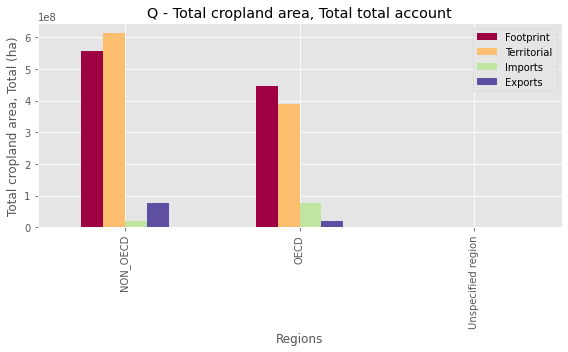Parsing the Eora26 EE MRIO database
Getting Eora26
You need to register at http://www.worldmrio.com to download Eora 26 database. You can download the files from http://www.worldmrio.com/simplified. Or you can download these files with the pymrio automatic downloader as described at Eora26 download.
Parse
To parse a single year do:
[1]:
import pymrio
[2]:
eora_storage = "/tmp/mrios/eora26"
[ ]:
eora_meta = pymrio.download_eora26(
storage_folder=eora_storage,
email="<Your Eora account email>",
password="<Your Eora account password>",
)
[3]:
eora = pymrio.parse_eora26(year=2005, path=eora_storage)
/home/konstans/bin/anaconda3/envs/pymrio_dev/lib/python3.7/site-packages/pandas/core/generic.py:3887: PerformanceWarning: dropping on a non-lexsorted multi-index without a level parameter may impact performance.
obj = obj._drop_axis(labels, axis, level=level, errors=errors)
Explore
Eora includes (almost) all countries:
[4]:
eora.get_regions()
[4]:
Index(['AFG', 'ALB', 'DZA', 'AND', 'AGO', 'ATG', 'ARG', 'ARM', 'ABW', 'AUS',
...
'TZA', 'USA', 'URY', 'UZB', 'VUT', 'VEN', 'VNM', 'YEM', 'ZMB', 'ZWE'],
dtype='object', name='region', length=189)
This can easily be aggregated to, for example, the OECD/NON_OECD countries with the help of the country converter coco.
[5]:
import country_converter as coco
[6]:
eora.aggregate(
region_agg=coco.agg_conc(
original_countries="Eora", aggregates=["OECD"], missing_countries="NON_OECD"
)
)
[6]:
<pymrio.core.mriosystem.IOSystem at 0x7fb7f2a14e90>
[7]:
eora.get_regions()
[7]:
Index(['NON_OECD', 'OECD', 'Unspecified region'], dtype='object', name='region')
[8]:
eora.calc_all()
[8]:
<pymrio.core.mriosystem.IOSystem at 0x7fb7f2a14e90>
[9]:
import matplotlib.pyplot as plt
with plt.style.context("ggplot"):
eora.Q.plot_account(("Total cropland area", "Total"), figsize=(8, 5))
plt.show()

See the other notebooks for further information on aggregation and file io.